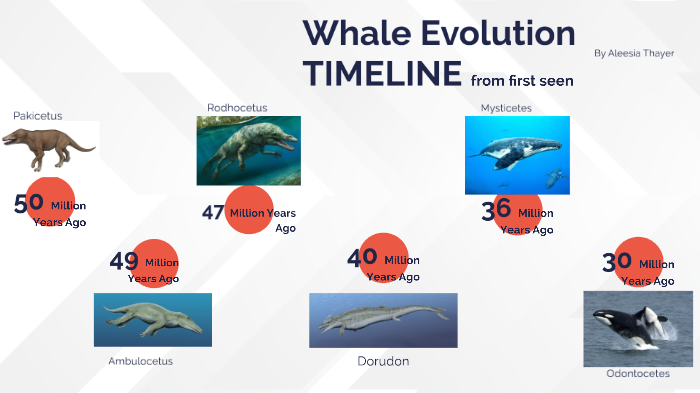Cetoddle Evolution Level is a captivating subject, exploring the multifaceted transformations this creature undergoes throughout its lifecycle. From subtle physical changes to significant behavioral shifts, each evolutionary stage presents unique challenges and opportunities. Understanding these stages is crucial for players seeking to maximize Cetoddle’s potential within the game, influencing gameplay mechanics and overall success.
This in-depth analysis delves into the intricate details of Cetoddle’s evolution, examining the environmental influences, genetic factors, and dietary changes that shape its trajectory. We’ll explore how these factors impact Cetoddle’s in-game performance, offering strategic insights and visual representations to enhance player understanding and engagement. The impact of the evolution system on player interaction and community building will also be examined.
Cetoddle Evolution Stages
Cetoddle, a captivating creature within the game’s ecosystem, undergoes a series of fascinating transformations throughout its lifespan. These evolutionary stages are marked by distinct physical and behavioral changes, impacting its capabilities and gameplay effectiveness. Understanding these changes is crucial for maximizing Cetoddle’s potential within the game.
Cetoddle Physical Transformations Across Evolutionary Stages

Source: redd.it
Cetoddle’s physical evolution is a dramatic spectacle. The initial stage, often referred to as the “Larva” phase, depicts a small, soft-bodied creature with muted colors. As it progresses to the “Pupa” stage, its body begins to harden, developing rudimentary limbs and a more defined shape. The final stage, the “Imago,” showcases a fully developed Cetoddle with vibrant coloration, strong limbs, and potentially additional features such as horns or wings, depending on environmental factors and genetic predispositions.
Cetoddle Behavioral Shifts During Evolution
Behavioral patterns shift dramatically across Cetoddle’s life cycle. Larvae are primarily passive, focusing on feeding and growth. Pupal stages are marked by reduced activity as the creature undergoes its metamorphosis. Imago Cetoddles, however, are much more active, exhibiting complex behaviors such as territoriality, mating rituals, and more sophisticated hunting strategies. These behavioral changes directly influence their interactions within the game’s ecosystem.
Cetoddle Evolutionary Timeline
The average time spent in each evolutionary stage varies depending on several factors, including environmental conditions and access to resources. However, a general timeline can be provided as a guideline. The Larva stage typically lasts for approximately 7 in-game days, the Pupa stage for 3 days, and the Imago stage for the remainder of its lifespan. This lifespan varies, but can extend to 30 in-game days.
Comparative Analysis of Cetoddle Strengths and Weaknesses Across Stages
| Stage | Strengths | Weaknesses | Gameplay Implications |
|---|---|---|---|
| Larva | High growth rate, vulnerability to predators low | Low defense, limited mobility | Prioritize resource gathering for rapid growth |
| Pupa | Protected from many predators during transformation | Immobile, vulnerable to environmental hazards | Focus on environmental protection and avoiding dangers |
| Imago | High mobility, strong defense, advanced hunting skills | Increased resource requirements, potential for competition | Strategic resource management and combat engagement |
Factors Influencing Cetoddle Evolution
Cetoddle’s evolutionary path is a complex interplay of environmental influences, genetic predispositions, and dietary habits. Understanding these factors is key to predicting and shaping its development within the game.
Environmental Impact on Cetoddle Evolution
Environmental factors such as temperature, humidity, and available resources significantly influence Cetoddle’s development. Warmer temperatures, for instance, might accelerate growth, while abundant food sources can lead to larger and stronger Imago stages. Conversely, harsh environments may result in smaller, less developed individuals.
Genetic Role in Cetoddle Evolutionary Trajectory

Source: prezi.com
Genetic inheritance plays a critical role in determining Cetoddle’s characteristics. Certain genes may predispose individuals towards faster growth, enhanced defenses, or specific behavioral traits. Breeding strategies can be employed to enhance desirable traits within the Cetoddle population.
Dietary Changes and Cetoddle Evolutionary Stages
Cetoddle’s diet undergoes a transformation throughout its evolution. Larvae consume primarily plant-based matter, while Imago Cetoddles might incorporate insects or other small creatures into their diet, reflecting a shift towards carnivory or omnivory. Dietary changes are reflected in their physical and behavioral adaptations.
Comparative Evolutionary Adaptations
Cetoddle’s evolutionary adaptations can be compared to similar creatures within the game’s environment. For example, its protective pupal stage mirrors the chrysalis phase of butterflies, while its final form exhibits analogous features to certain predatory insects in terms of size, speed, and hunting strategies. These comparisons provide valuable insights into Cetoddle’s evolutionary pathway.
Cetoddle Evolution and Gameplay Mechanics
Cetoddle’s evolution is intricately woven into the game’s mechanics, influencing its performance and strategic value. Understanding how its evolution affects gameplay is essential for achieving success.
Cetoddle Evolution’s Impact on Gameplay Performance
Each evolutionary stage grants Cetoddle different capabilities. Larvae are weak but efficient at resource gathering, Pupas are vulnerable but safe, while Imago Cetoddles are powerful but resource-intensive. Players must adapt their strategies to maximize the advantages of each stage.
Flowchart Illustrating Cetoddle’s Evolutionary Progression
A flowchart depicting Cetoddle’s evolutionary path would begin with the “Egg” stage, progressing through “Larva,” “Pupa,” and finally to “Imago.” Each stage would have branches representing potential outcomes based on environmental factors, resource availability, and player actions.
Strategies for Maximizing Cetoddle’s Evolutionary Potential
Effective strategies include careful resource management during the Larva stage to ensure rapid growth, protective measures during the Pupa stage to avoid hazards, and strategic hunting and combat techniques during the Imago stage. Players must also consider breeding strategies to enhance desired traits.
Determining a Cetoddle’s evolution level requires careful observation of its unique characteristics. Researchers often cross-reference these traits with anecdotal evidence, such as the experiences detailed in articles like this one on reading craigslist pets , which surprisingly offers insights into unusual pet behaviors. Ultimately, understanding the Cetoddle’s evolution level depends on a comprehensive approach combining scientific data and real-world observations.
Crucial In-Game Resources for Cetoddle’s Evolution
- Nutrients: Essential for growth and development at all stages.
- Protective Shelters: Crucial for survival during the vulnerable Pupa stage.
- Combat Resources: Necessary for successful hunting and defense as an Imago.
- Breeding Resources: Needed for controlled breeding and enhancing desirable traits.
Visual Representation of Cetoddle Evolution
The visual transformation of Cetoddle is a striking aspect of its evolutionary process. Detailed descriptions can paint a vivid picture of these changes.
Detailed Description of Visual Differences Across Evolutionary Stages
The Larva stage is characterized by a small, soft, almost translucent body with muted colors, possibly pale green or brown. The Pupa stage shows a hardening of the body, a more defined shape, and the beginnings of limbs. The color might darken slightly. The Imago stage exhibits a fully formed body with vibrant colors – perhaps bright blues, greens, or reds – and fully developed limbs.
It might also possess horns, wings, or other distinct features.
Hypothetical Illustration of Cetoddle’s Complete Evolutionary Process
A hypothetical illustration would begin with a tiny, almost microscopic egg. The next panel would show a small, soft-bodied larva actively feeding. The following panel would depict a pupa, encased in a protective shell, undergoing its transformation. The final panel would showcase a fully developed Imago, displaying its vibrant colors and distinctive features, standing proudly in its environment.
Step-by-Step Guide for Visually Representing Cetoddle’s Evolution
Step 1: Depict the egg, small and unassuming. Step 2: Show the larva, highlighting its size, color, and lack of limbs. Step 3: Illustrate the pupa, emphasizing the hardening of its body and reduced mobility. Step 4: Showcase the Imago, focusing on its size, color, limbs, and any unique features such as wings or horns. Each step should use clear, contrasting colors and detailed features to emphasize the changes.
Cetoddle Evolution and Community Engagement
The Cetoddle evolution system fosters a strong sense of community among players, encouraging interaction and knowledge sharing.
Impact of Cetoddle Evolution on Player Interaction and Community Building, Cetoddle Evolution Level
The complexities of Cetoddle’s evolution create opportunities for players to share strategies, tips, and observations. This fosters a collaborative environment where players learn from each other and build strong relationships within the game’s community.
Examples of Community-Created Content Related to Cetoddle Evolution
Community members might create guides, videos, or forum discussions detailing optimal breeding strategies, efficient resource gathering techniques, or insights into environmental influences on Cetoddle’s development. These shared resources enhance the overall player experience.
Player Strategies and Information Sharing Regarding Cetoddle Evolution
Players actively share information about successful breeding strategies, optimal feeding techniques, and effective methods for navigating the various evolutionary stages. This collaborative approach accelerates learning and contributes to the overall success of the community in understanding and mastering Cetoddle’s evolution.
Conclusive Thoughts: Cetoddle Evolution Level
Ultimately, mastering Cetoddle’s evolution is key to thriving in the game. By understanding the interplay between environmental factors, genetics, and strategic gameplay, players can unlock Cetoddle’s full potential. The community’s collaborative efforts in sharing strategies and creating content further enrich the experience, highlighting the dynamic and engaging nature of this evolutionary system. Further research into specific genetic markers and environmental triggers could unlock even deeper understanding of Cetoddle’s evolutionary pathway.
